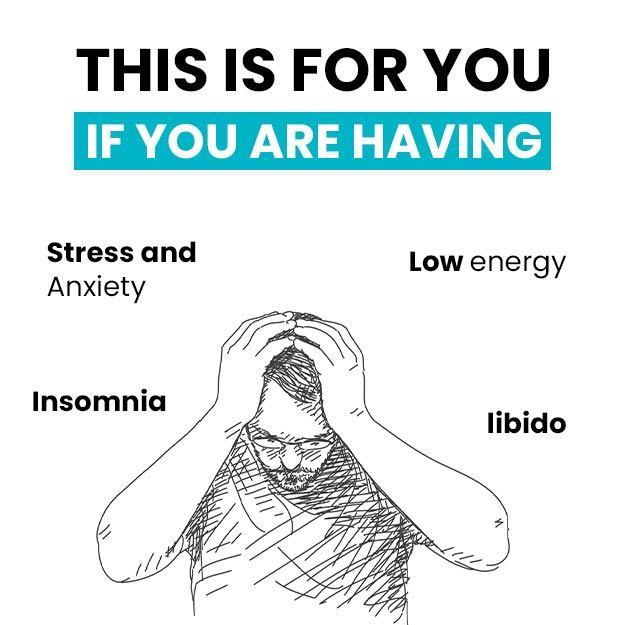After erectile dysfunction, ejaculatory problems are one of the most common sexual problems in men. Studies suggest that ejaculatory latency or the time taken for ejaculation varies in men; what is considered optimum by one might not be enough for another. Early or late ejaculation can be an issue of utter embarrassment for most men. Ejaculatory disorders can be of the following types:
Let us explore all of these in detail.
Premature ejaculation
Premature ejaculation (PE) is usually characterised by an early and uncontrolled ejaculation that happens just before or after penetration. Intravaginal ejaculation latency time (IELT), that is, the time between ejaculation and penetration of less than 1 minute is generally marked as Premature ejaculation but an IELT between 1 to 1.5 minutes is also in the high-risk category for PE. PE has been reported in 4 to 40% of men in the world. It can either be lifelong, acquired, subjective or variable. Lifelong PE is defined as being consistent. However, this type of PE is associated with other problems like a premature erection. Some genetic and hormonal factors have been found to be the risk PE.
On the basis of Ejaculation time and complaint frequency, PE can be classified into the following categories:
| Type of PE |
Lifelong PE |
Acquired PE |
Variable PE |
Subjective PE |
| IELT |
Less than 1 min |
Less than 3 min |
Normal |
Normal |
| Causes |
Disturbances in
biological function |
Individual,
medical or
psychological |
Could be due to
variation in
sexual function |
Psychology or
culture |
| Early ejaculation |
Present |
Present |
Sometimes present |
Often present |
| Early erection |
Present |
Absent |
Absent |
Absent |
| State |
Hypertonic
(hyper-erotic) |
Hypotonic |
Normal |
Normal |
Non-excited state of
penis after ejaculation |
Present |
Absent |
Absent |
Absent |
Apart from the aforementioned causes, hormones have also been linked to PE. Low levels of prolactin are generally observed in men suffering from PE.
These factors play an important role in the diagnosis of PE.
Treatment
Depending on the type of the PE the treatment may vary, which is discussed as follows:
Lifelong PE
It is usually treated with the administration of SSRIs, which are inhibitors of the serotonin hormone. These drugs increase the time of ejaculation. But they have some side effects. While some men don’t need additional counselling, it is usually provided to explain to them the effects of the drug and the condition. Also, lifelong PE and the effect of treatment drugs need to be regularly monitored.
Acquired PE
The treatment of acquired PE mostly includes counselling and psychotherapy and may not require any drugs. However, depending on the individual condition, oral or topical drugs may be administered.
Subjective PE
Since this type is usually caused by normal variations in sexual functions, it is essential that such men understand the underlying cause of their PE. Treatment of subjective PE, thus, primarily includes personal and couple counselling. SSRIs may or may not be prescribed.
Variable PE
This type of PE doesn’t require any treatment. In case of variable PE, psychological analysis is usually done to help the person find out and deal with the mental condition behind this problem.
Delayed ejaculation
Quite opposite to premature ejaculation, delayed ejaculation refers to a condition wherein the person isn’t able to ejaculate or when the ejaculation time (IELT) is much longer than usual.
It is also variably known as inhibited ejaculation, idiopathic anejaculation (AE), inadequate ejaculation and retarded ejaculation. Although AE usually refers to a total inability to ejaculate.
According to the American Psychiatric Association, to confirm DE, a person should have at least one of the two conditions:
- Delay or inefficiency of ejaculation
- An absence of ejaculation in the past six months with no reduction in arousal.
There seems to be a conflict when it comes to defining the IELT time marking DE. According to the Journal of Sexual Medicine, the IELT for DE is 20-25 minutes. However, as per a study published in the Journal of Sex and Marital Therapy, IELT ranges from 4 to 10 minutes in normal men, so any deviation higher than this time frame could be considered DE.
Nonetheless, DE seems to be the least prevalent male sexual disorder with only 1% of men with lifelong DE and around 5% of men suffering from acquired DE.
Delayed ejaculation is normal with age but some other actors have also been associated with this condition. Here is a list of such factors*:
- Lack of confidence
- Guilt
- Religious beliefs
- Psychological problems like anxiety and depression
- High frequency or vigorous masturbation
- Dissatisfaction with love, relationship or partner
- Sexual fantasies that are different from the reality
- Lack of sexual desire
- Medications or drugs like SSRIs that delay ejaculation and antidepressants
- Individual genetics
- Low thyroid function
- Lack of prolactin hormone
*Note: The list isn’t comprehensive. The diagnosis depends on individual factors and clinical history.
Diagnosis
DE is usually diagnosed by a person’s sexual history and some clinical tests. History includes factors such as neurological disorders, masturbation, lack of orgasm, the frequency of intercourse, urinary or testicular problems, or cultural constraints.
While clinical examination usually includes examining vas deferens and epididymis, any abnormalities in the testes size and size of the penis, ability, or inability to feel testicular squeezing (normally that stimulates pain receptors), cremasteric reflex (reflex associated with stroking the inner thigh).
Further tests may be suggested by the physician to confirm any abnormality.
Treatment
Treatment of DE would depend on the individual cause and may include counselling if it is a psychological issue. However, in some cases, testosterone solution and dopamine (pleasure hormone of the body) agonist drugs may be prescribed to enhance sexual function. It is important to note that most of these drugs have some associated side effects which include inflammation, nausea, urinary problems, constipation and diarrhoea.
Retrograde ejaculation
Retrograde ejaculation is an uncommon male sexual dysfunction, occurring in less than 2% of the cases. Sympathetic nerves are responsible for the expulsion of semen from the penis. It makes sure that the internal urethral sphincter (a muscle that closes or opens to let fluid pass through a certain point in the body) remains closed and the semen flows out instead of going back into the urethra. Any dysfunction in the sympathetic nerve would cause the semen to collect in the urethra. As a result, very less or no semen comes out with orgasms. This condition is defined as retrograde ejaculation (RE). However, there is no difficulty in arousal or erection.
Several factors can cause RE such as genetics, spinal injury, neck injury, bladder surgery. Diabetes mellitus and Parkinson’s has also been found to be associated with RE.
It is also associated with cloudiness in the urine which is due to the presence of semen. This is one of the diagnostic features of retrograde ejaculation.
Treatment
Treatment of RE includes certain drugs or surgery, depending on the individual case.
Oral drugs that mimic the function of sympathetic nerves are usually included in the treatment of RE. Additionally, anticholinergics, drugs that inhibit the function of parasympathetic nerves are also used for RE treatment. Needless to say, most of these drugs may have some of their own side effects and should be taken under the supervision of a doctor.
According to a study, sperms can also be obtained from the bladder after intercourse and inseminated artificially to alleviate fertility issues in couples.
























